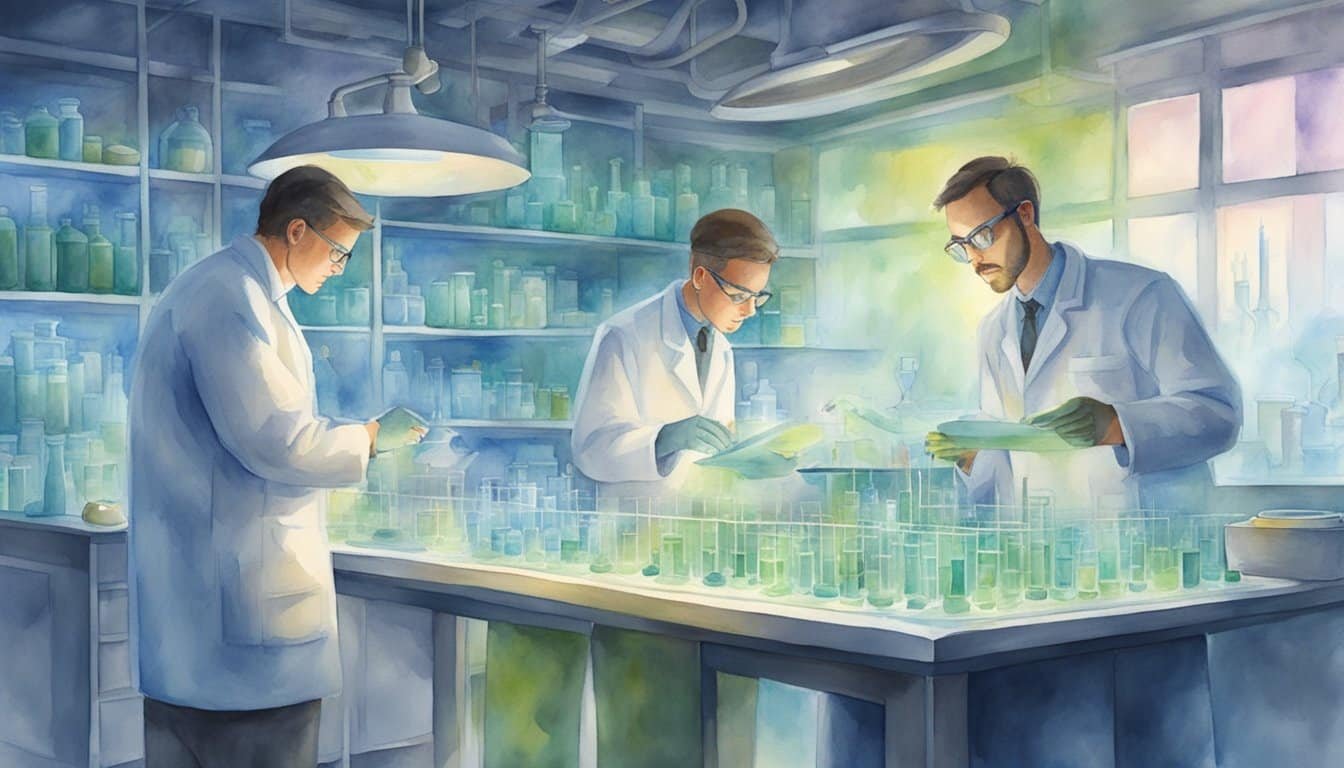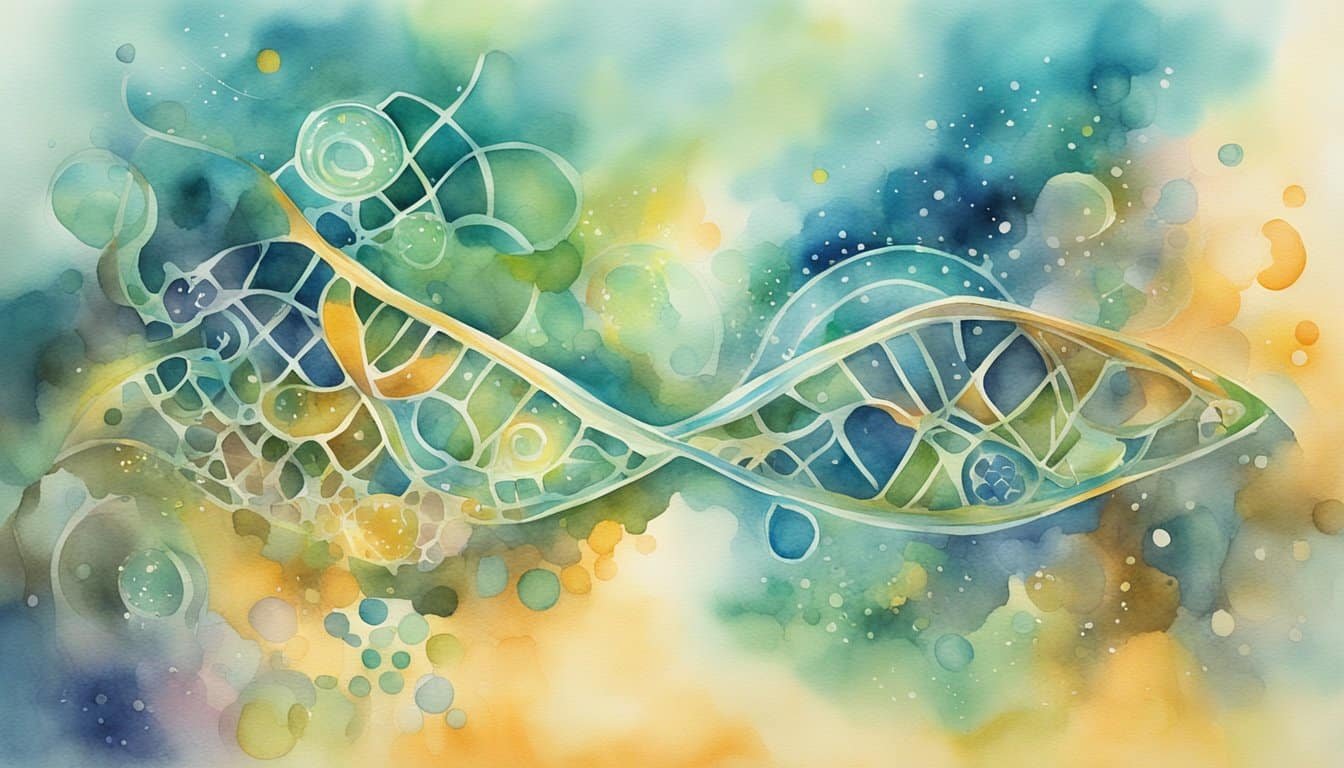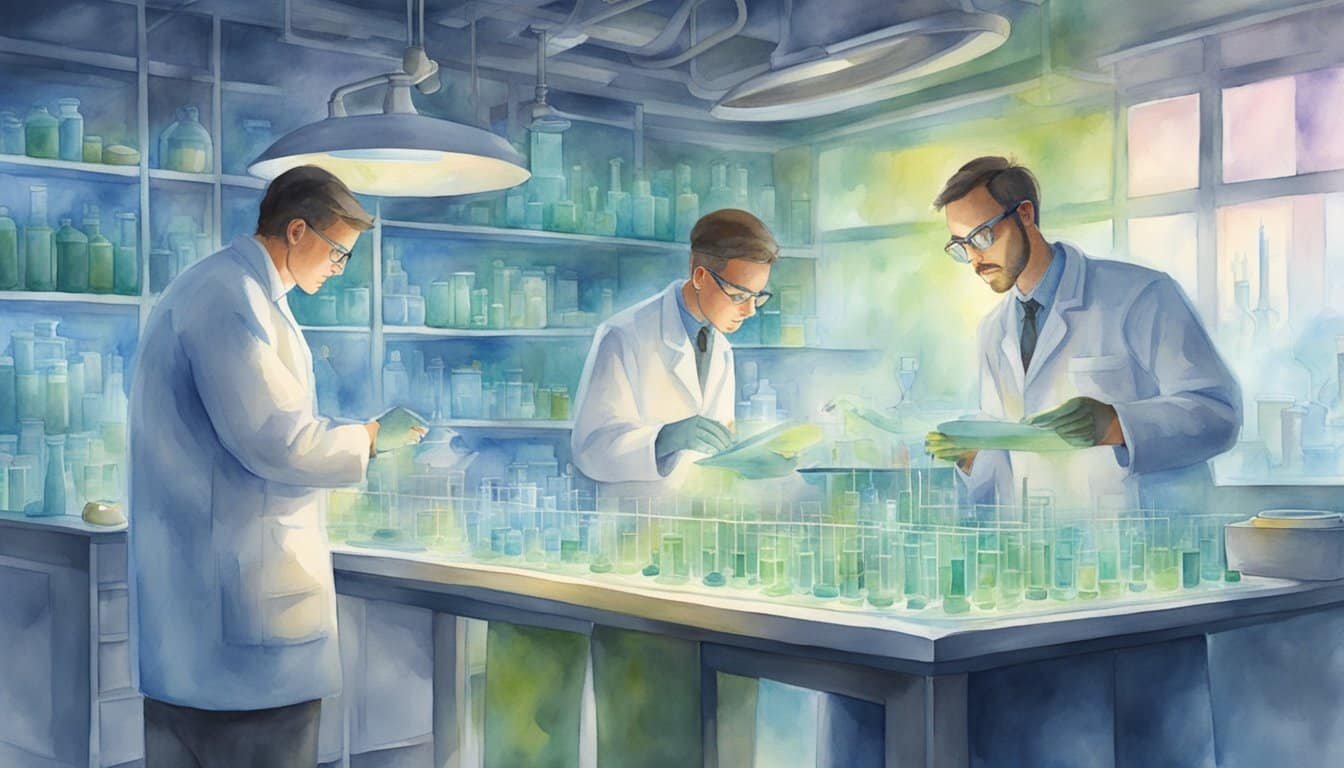Understanding Alien DNA
Exploring the concept of alien DNA requires us to push the boundaries of our scientific understanding and consider genetic materials that may not follow the familiar rules of Earth-based life forms.
Defining Alien DNA
Alien DNA—if it exists—would be DNA from organisms not originating from Earth. Structurally it might be similar to terrestrial DNA, which is composed of a double helix structure, made up of nucleotides containing adenine (A), thymine (T), cytosine (C), and guanine (G). These nucleotides pair up in specific ways: A with T, and C with G, to form the genetic code that guides the development of organisms on Earth.
Comparison With Earth Organisms
When comparing alien DNA to that of Earth organisms, scientists hypothesize that the former may incorporate different building blocks. They might use alternative bases outside of the familiar A, T, C, and G, which could encode different amino acids and hence unique proteins. The sequence of these bases is critical in coding for genes, with RNA being key in transferring the code to create proteins through codons, which are sequences of three nucleotides. For more detailed insights into the potential structure of alien genetic material and its impact on understanding biological invasions on Earth, DNA (meta) barcoding of biological invasions provides valuable information.
Scientific Research and Breakthroughs

In the field of genetics, the idea of “alien DNA” refers not to extraterrestrial life, but to unfamiliar nucleotides incorporated into genetic structures. This pioneering realm has seen scientists like Steven Benner push the boundaries, yielding results that both baffle and inspire.
Pioneering Studies and Experiments
Researchers have conducted several ambitious experiments to understand genetic material that could be considered “alien” in its unfamiliarity. This often involves adding novel base pairs to DNA, expanding the genetic alphabet beyond the natural A, T, C, and G. One such study at the University of Washington successfully incorporated a synthetic base pair into the genome of Escherichia coli, a common bacterium. This experiment not only held implications for understanding life’s potential variability but also for biotechnological applications.
Benner’s Contributions to Xenobiology
Steven Benner, a distinguished biologist, is renowned for his contributions to xenobiology, the study of synthetic life forms. Benner’s work often explores how life might arise and be detected in extraterrestrial environments. Notably, his research has led to the creation of synthetic nucleotides called ‘d5SICSTP’ and ‘dNaMTP’, which pairs with each other in a double helix and are recognized by polymerases. These modified nucleotides enhance our understanding of the potential complexity and diversity of life-sustaining genetic information.
The Role of Synthorx and Their Synthetic Bases
Synthorx, a biotechnology company, has been at the forefront of integrating synthetic bases into a living organism’s DNA to produce novel proteins. By incorporating these unnatural bases, dubbed d5SICS and dNaM, Synthorx can develop new proteins with functions not found in nature. The company’s innovative approach exemplifies how breakthroughs in understanding and manipulating “alien” genetic codes can lead to groundbreaking therapeutic and industrial applications. The fusion of these synthetic bases into E. coli represents a leap in synthetic biology’s efforts to harness the full potential of genetic coding.
How Does Understanding the Big Bang Help Us Unravel the Genetic Secrets of Alien DNA?
Understanding the Big Bang is crucial for unraveling the genetic secrets of alien DNA. By exploring the monumental origins of the universe, scientists can decipher how life may have emerged on other planets, revealing the fundamental structures of DNA and the evolutionary pathways that might exist beyond Earth.
Implications and Cultural Impact

The prospect of extraterrestrial life continues to enthral humans, raising profound questions about our place in the universe and potentially shifting the paradigms within which we understand our own history, biology and the physical limits of life.
Extraterrestrial Life and Human Understanding
The discovery of alien DNA would dramatically alter human understanding of biology. Not only would it confirm the existence of life beyond Earth, but it would also likely reveal new biological processes, potentially illuminating the early stages of life on our own planet. Research into ancient DNA and bones has already revolutionized our knowledge of Homo sapiens and human ancestry. Similarly, alien genetic material could reshape the biological sciences, providing a new lens through which to view the tree of life.
Impact on Humanity’s Future
Engaging with alien life could spur technological innovation, as humanity seeks to understand and possibly integrate extraterrestrial biotechnology. The study of artifacts and potential alien spacecraft materials might lead to breakthroughs in materials science, energy, and even medicine. More broadly, the definitive existence of aliens would likely influence our approach to space exploration, international cooperation, and philosophical reflections on humanity’s place in the cosmos.
Ufology and Public Interest
Public interest in unidentified flying objects (UFOs) and ufology reflects the cultural impact that the possibility of extraterrestrial visitors has on societies worldwide. High-profile incidents and government releases of declassified information have sparked a fervent public discourse. Ufology has not only captivated the curiosity of amateur and professional researchers alike but has also permeated popular culture, influencing movies, literature, and art, and shaping the collective imagination around the potentiality of alien visitors.

